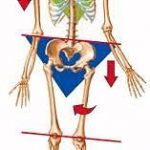How Long Does It Take Hamstring Injuries to Repair?

Hamstring strains can be one of those nagging injuries. Healing rates depend on the grade of injury and many other factors. Most hamstring strains will reoccur within the first year of injury if they are not rehabbed properly. It is for this reason, that you should see a physiotherapist, physical therapist and /or sports therapist for a physical assessment to minimise re-injury.
How Severe is your Hamstring Strain?
Grade I: The muscle fibres are merely overstretched, with microscopic tissue tears possible. A grade I muscular strain usually has no visible symptoms. There is pain and limited motion.
Grade II: Partial hamstring muscle tears with considerable oedema and bruising.
Grade III: Full thickness ripping of the muscle tissue, causing substantial discomfort and loss of movement, as well as swelling and bruising in the back of your leg.
Immediate management of acute hamstring strains revolve around the PRICE principle, as for all soft tissue injuries. We should Protect, Rest, Ice, Compress and Elevate. Treatment for hamstring tears must address all intrinsic and extrinsic variables that contribute to injury to limit the likelihood of recurrence. To get an accurate diagnosis and establish a comprehensive treatment program, our Physiotherapists, Physical therapists, or sports therapists will conduct a thorough history and examination.
Our team at Archview Physiotherapy Pain and Sports Injury Clinic are specialists in the field of sports injuries. To book an appointment with one of our team, please visit our website www.archviewclinic.ie or call 0141913228. Located in Ranelagh, Dublin 6.







